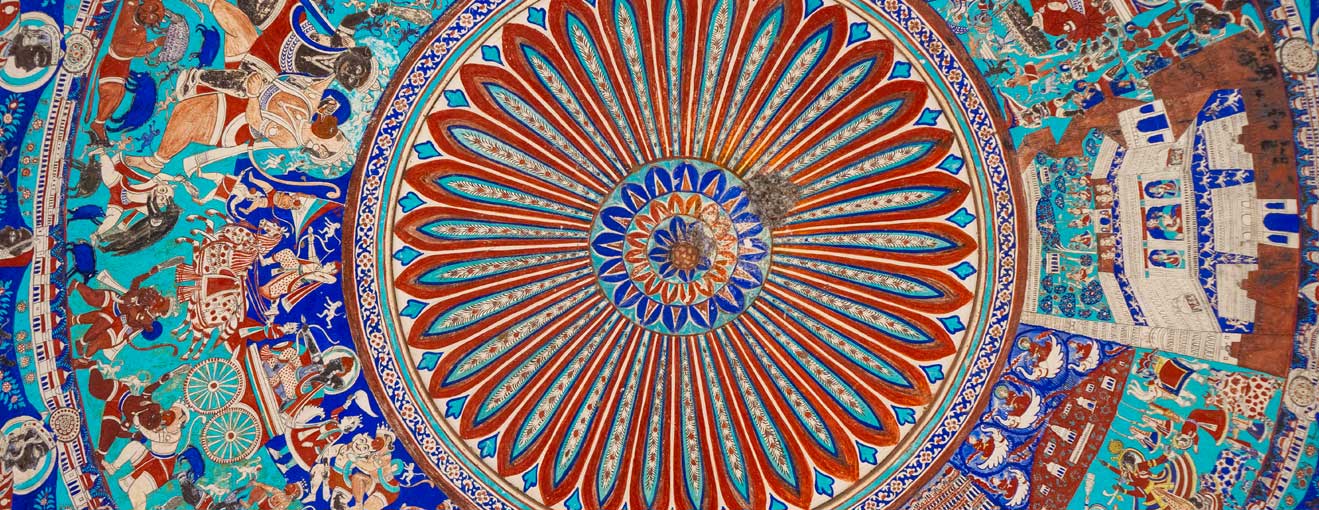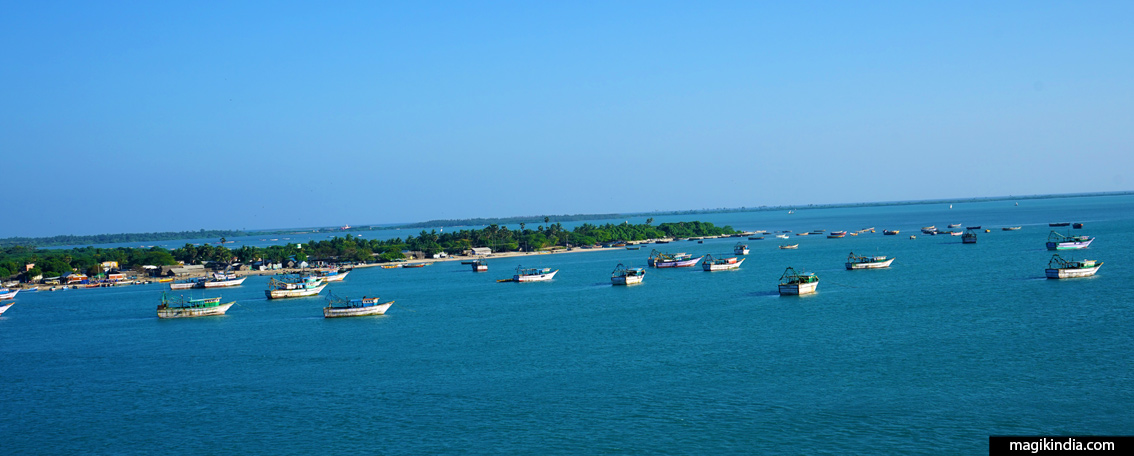
Rameshwaram, the legendary island of Tamil Nadu
![]() An island surrounded by crystal waters and edged with delightful fishing villages, and a temple with endless pillars that houses one of India’s most holy shrines: Rameshwaram is a mandatory stop for anyone visiting Tamil Nadu.
An island surrounded by crystal waters and edged with delightful fishing villages, and a temple with endless pillars that houses one of India’s most holy shrines: Rameshwaram is a mandatory stop for anyone visiting Tamil Nadu.
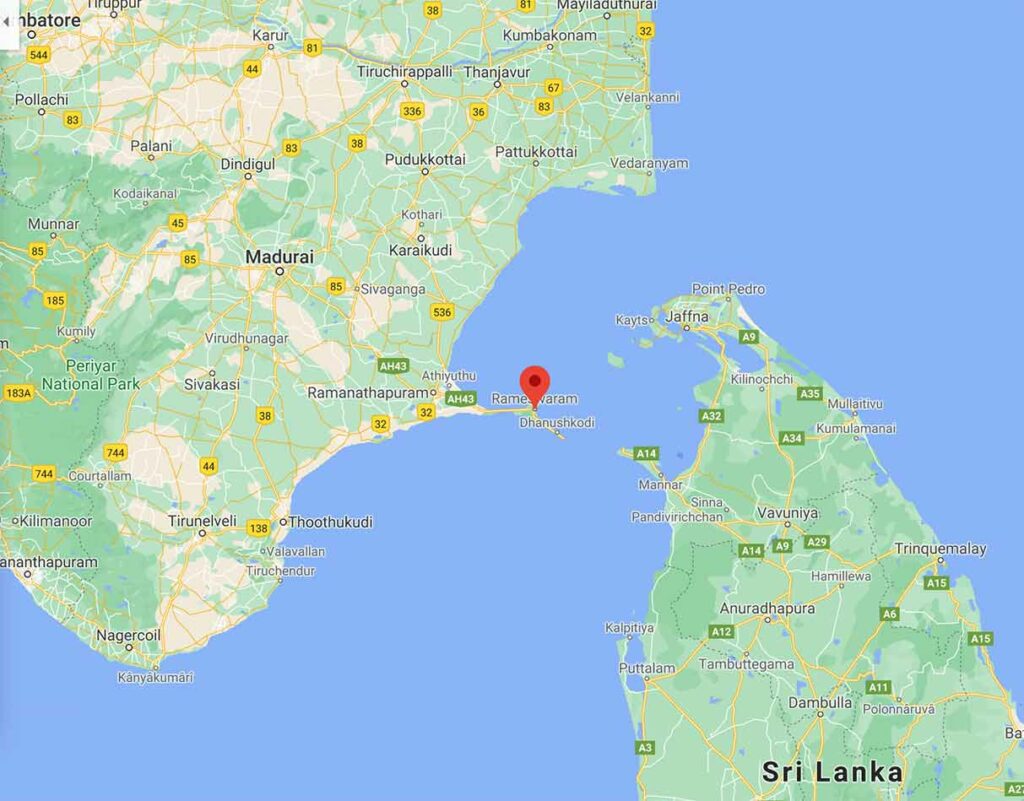
The Legend of Rameshwaram
The legends says that the island of Rameshwaram is where the Hindu god Rama built a bridge across the sea to Sri Lanka to go and rescue his spouse Sita from her kidnapper Ravana.

The town was named Rameshwaram, “land of Lord Rama” when Rama worshipped Shiva on his return from Sri Lanka.
To cleanse himself of the murder of King Ravana, which were an ardent devotee of Shiva, Lord Rama wanted to offer a shrine to Shiva.
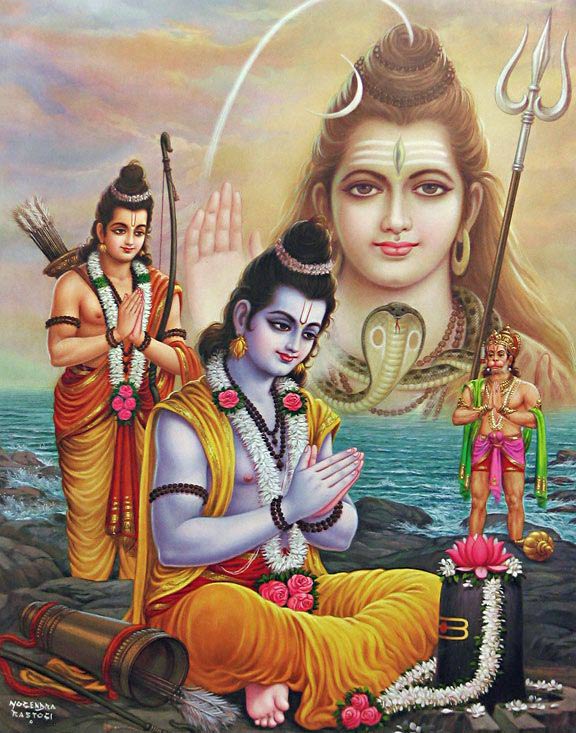
He asked Hanuman, the monkey lieutenant of his army, to bring a lingam from Mount Kailash. But that took time and as the propitious period for installing the lingam was at its end, Sita made a small lingam out of sand.
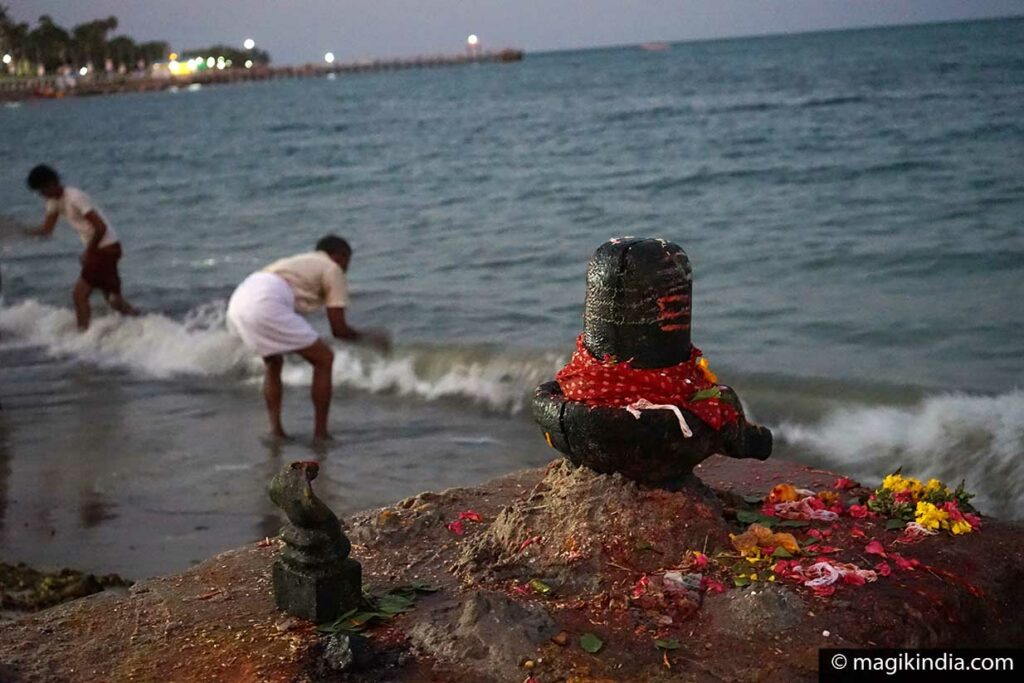
When Hanuman got back with the Shiva Lingam and saw the sand lingam he was very disappointed. To console him, Rama ordered that all pujas should first be performed on the Vishwalinga Hanuman had brought – a tradition that continues to this day.
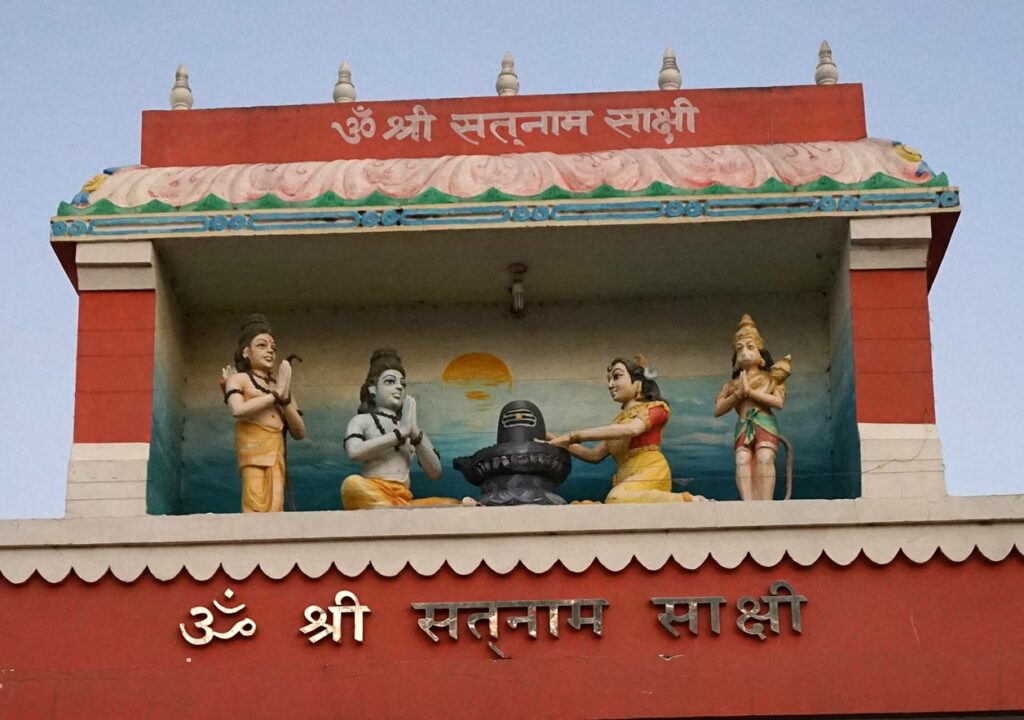
Rama’s bridge, Myth or reality?
The Rama Bridge or “Rama Sétu” or “Adam’s Bridge” is mentioned in the ancient Indian epic of Ramayana under the name of “Setubandhanam”. Rama Sétu (“setu” means “bridge” in Sanskrit) refers to the bridge built by the army of the Vanaras (ape-men) of Rama, which was used to reach Sri Lanka and save Sita.
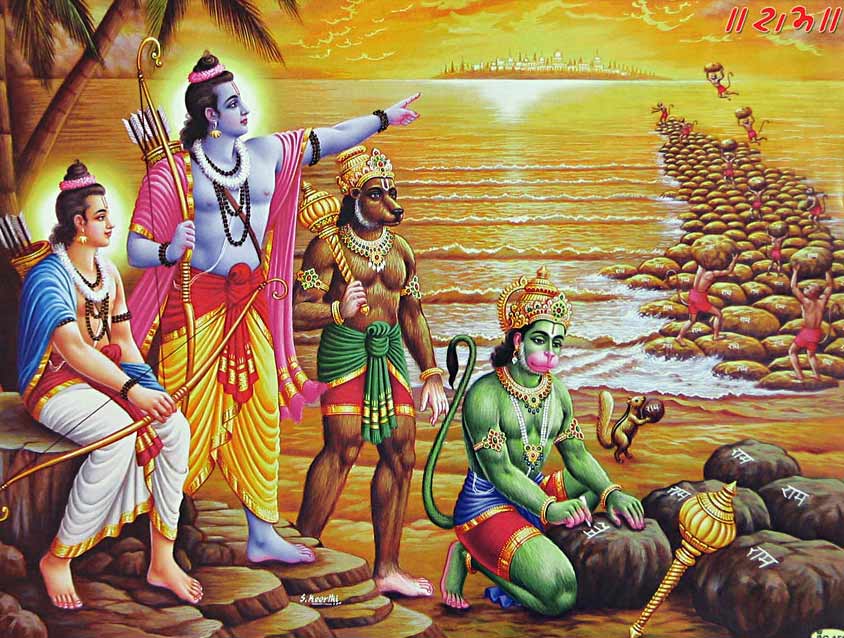
What was only a legend became a bit more of a reality when NASA satellite images of 2002 did reveal an arm connecting Sri Lanka to Rameshwaram.
Different Hindu religious groups based on these images claim that this bridge did indeed exist and was man-made. Nevertheless, until very recently, numerous scientific studies confirmed by several court decisions in India determined that this bridge was in fact just a long bar of sand and corals.

However, in December 2017, there was an unexpected turn: several researchers from Indiana University, Colorado and Oregon said that there are indeed rocks under the Adam’s Bridge and that they were older than the sandbank covering them…
The next episode of this mythological enigma is to be continued!
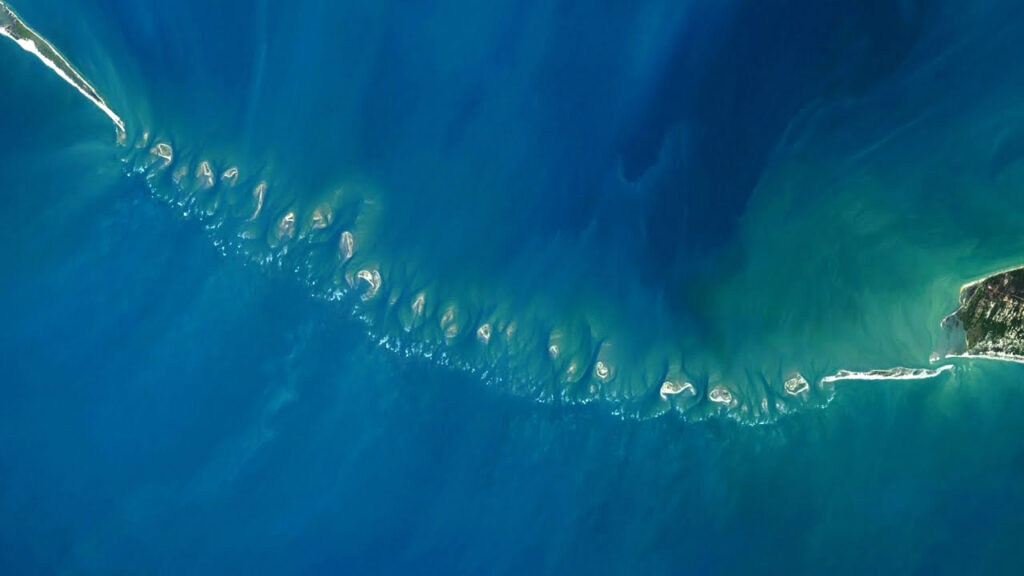
And now, let’s visit Rameshwaram!
Ramanathaswamy Temple
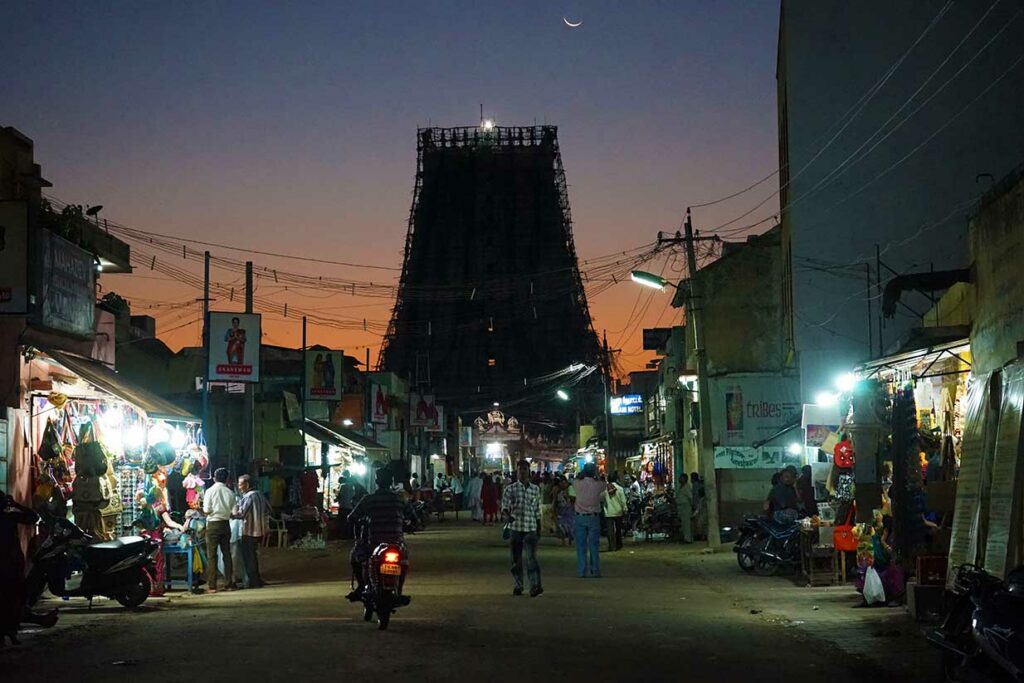
Ramanathaswamy temple is a major pilgrimage site for Hindus, for several reasons:
It contains one of the 12 Jyotir Lingams or “lingams of light”;
It is also one of the 275 Paadal Petra Sthalams, the Shiva temples glorified in the verses of the three most venerated Nayanars (Shivaite tamil saints), Appar, Sundarar and Tirugnana Sambandar;
Lastly, the temple is one of the Char Dham, the four most holy places in India, the others being Badrinath, Puri and Dwarka.

There are two lingams in the temple: the Ramalingam which according to legend was made by Sita and is the temple’s main deity, and the one Hanuman is supposed to have brought, called Vishwalinga.
As well as its spiritual aspect, Ramanathaswamy temple is known for its immensely long corridors with thousands of carved pillars. It’s a perfect architectural gem.
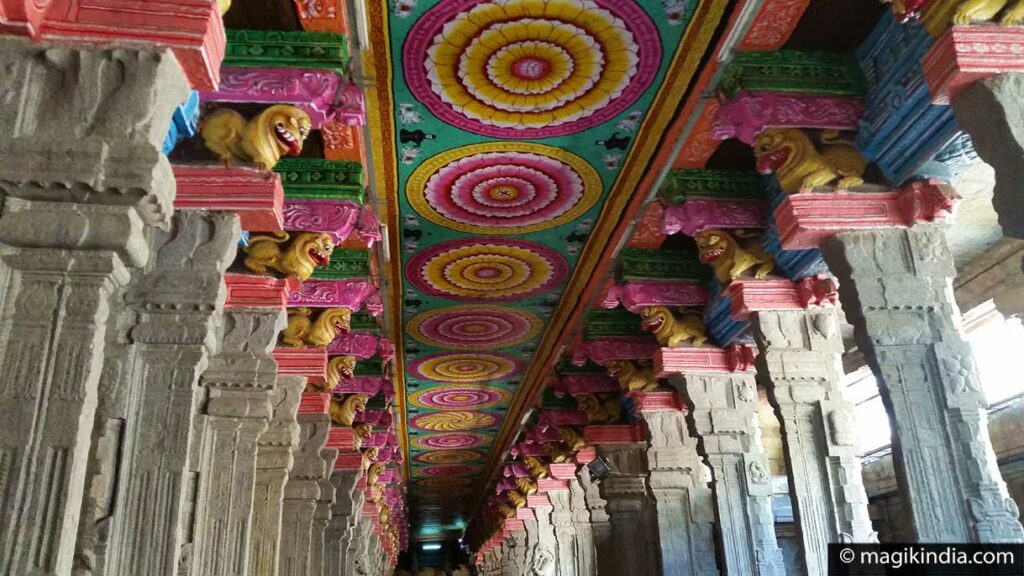
READ MORE ABOUT THE JYOTIR LINGAMS
[ The art of making chai in Rameshwaram 🙂 ]
Rameshwaram’s sacred wells
There are totally 64 theerthams (holy water bodies) on Rameshwaram Island. According to the sacred Skanda Purana scriptures, 24 of them are important places for spiritual elevation.
Bathing in the theerthams is an important aspect of the Rameshwaram pilgrimage and is regarded as a penance.
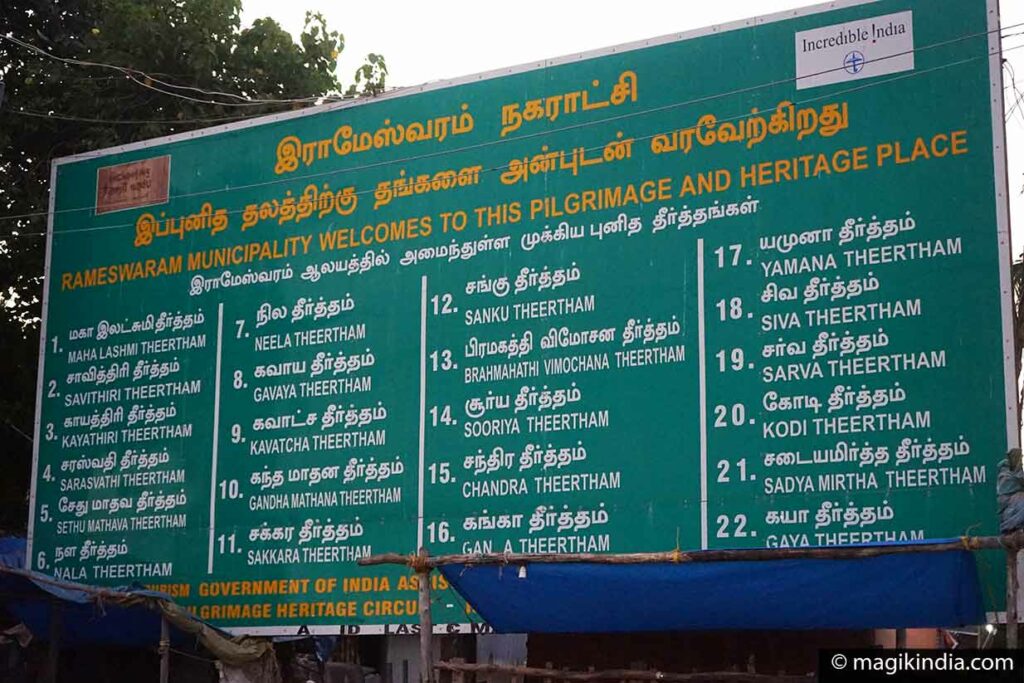
According to the legend, Rama created those wells after realizing his mistake in killing Ravana. Rama recognized that Ravana was a great Shiva devotee who had received boons directly from Lord Mahadev and that killing him was a sin.
So, in reality, in Rameshwaram, Rama performed an “atma shanti puja” (ritual for the peace of the soul of the deceased) in Ravana’s name. In the Vedas it is said that whoever asks in this place for someone’s soul to attain a peaceful state after their passing, it will be given.
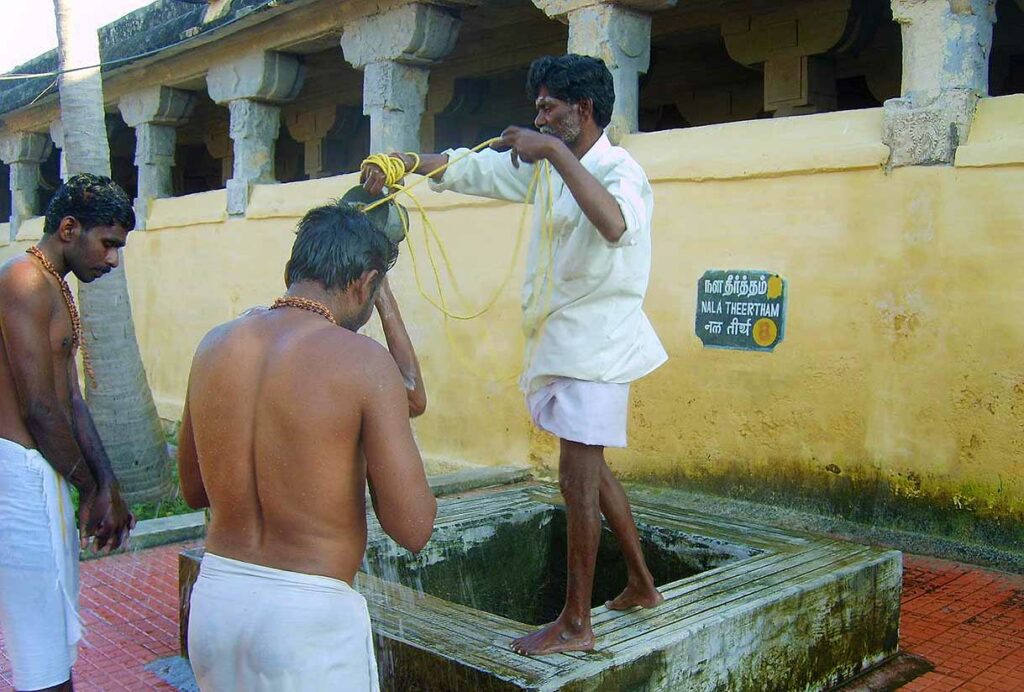
Twenty-two of the teerthams are tanks inside the Ramanathaswamy temple precinct. The number 22 symbolises the 22 arrows in Rama’s quiver. Pilgrims go from one tank to the next to pour water over themselves with a small bucket.
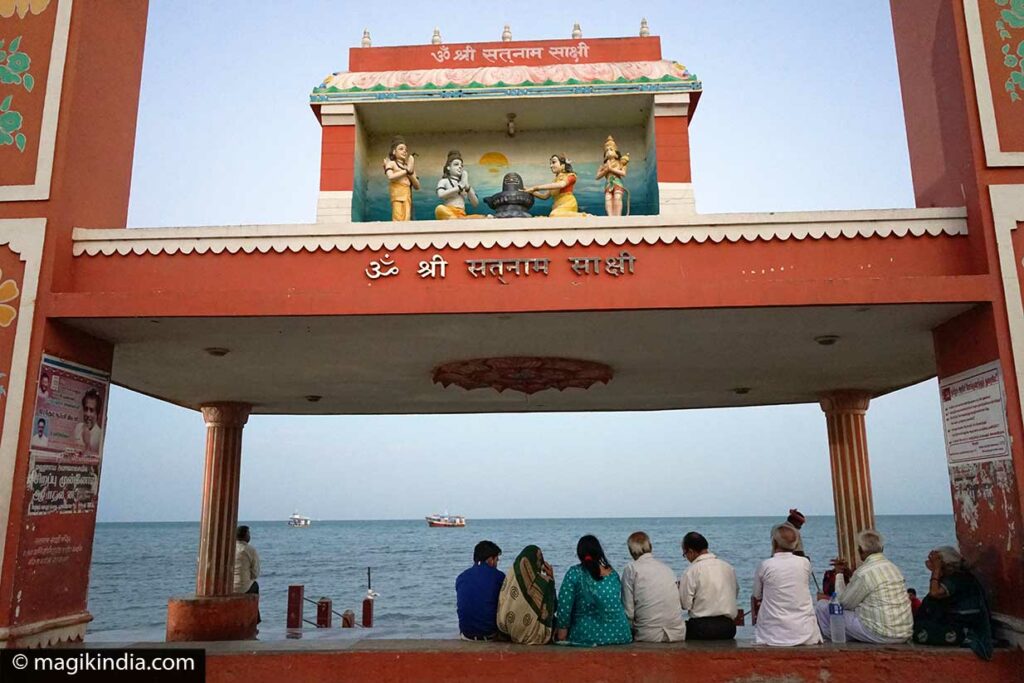
It is said that the water in each theertham has a different taste and temperature. Each one has a special significance. The water is also supposed to have healing powers.
For a complete pilgrimage, the faithful bathe in the sea near the temple (Agni Theertham) before moving on to the tanks.
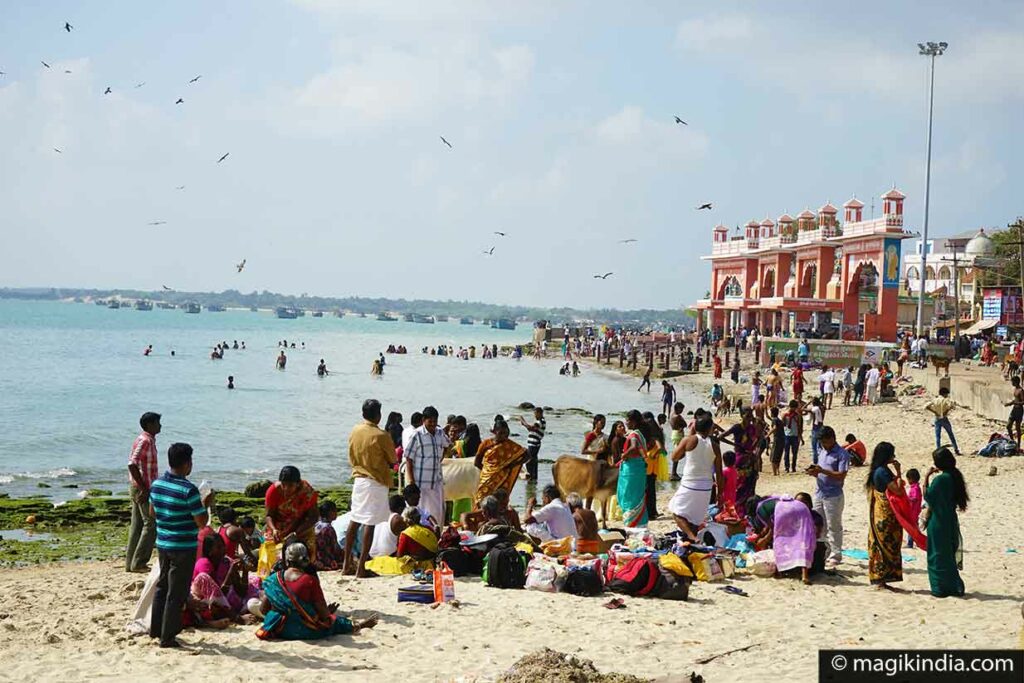
Sri Panchmukhi Hanuman temple
Located 2 km from Ramanathaswamy, Sri Panchmukhi Hanuman is one of the temples not to be missed in Rameshwaram. Its main interest is its beautiful six-meter statue of Hanuman with five heads; it is not frequent to see this image of the monkey-god.
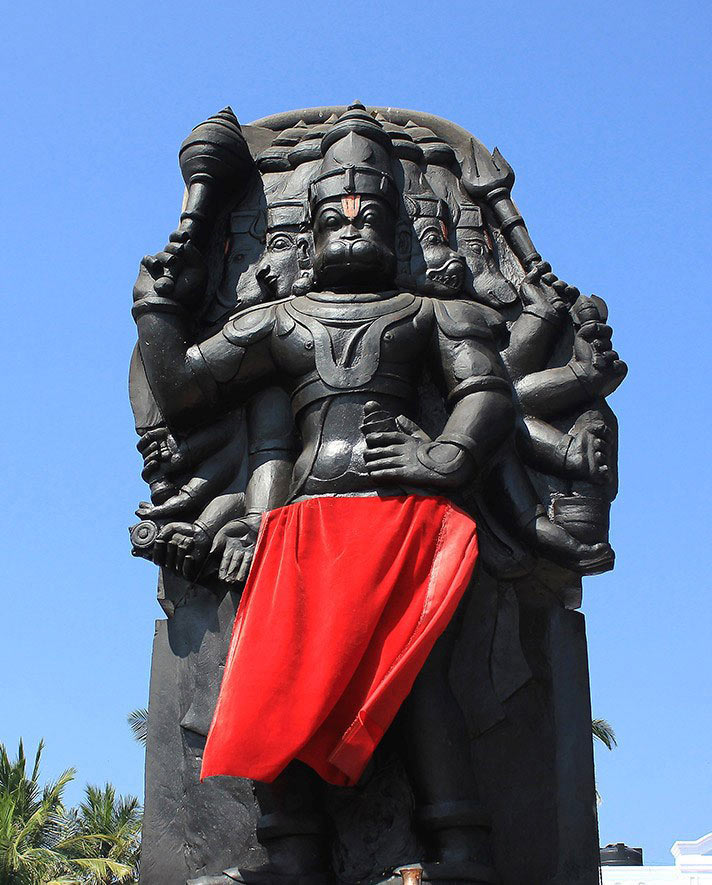
The central head of the statue is that of Hanuman, three others represent three of the eight incarnations of the god Vishnu: Varaha (the man-boar), Hayagriva (the man-horse), Narsimha (the man-lion). The fourth face is that of Garuda, the eagle-man, the divine vehicle of Vishnu.
It is said that Hanuman took on this five-headed form in order to kill Mahiravan, who had kidnapped Rama and Lakshmana. Mahiravan was a rakshasa (a man-eating supernatural being) who had secretly taken Rama and his brother Lakshmana to the underworld to sacrifice them on the altar of the goddess Mahamaya. Hanuman arrived in time and saved the lives of the divine brothers by slaying Mahiravan and his army.

Right next to it, a small shrine contains the mysterious “floating stones”, which, according to believers, would be those used to build the bridge of Rama. In fact these magic stones are said to be volcanic stones which, despite their weight, have a very low density and float naturally on the water.
Dhanushkodi

To end the visit to Rameshwaram, Dhanuskodi is a must! Located at the tip of Rameshwaram Island, it takes around 30 minutes drive from the center of Rameshwaram to reach the beach. There, the Indian Ocean (right) merges with the Arabian Sea.
It is from this part of the island that the legendary Rama Bridge would have been built (see at the beginning of the page).
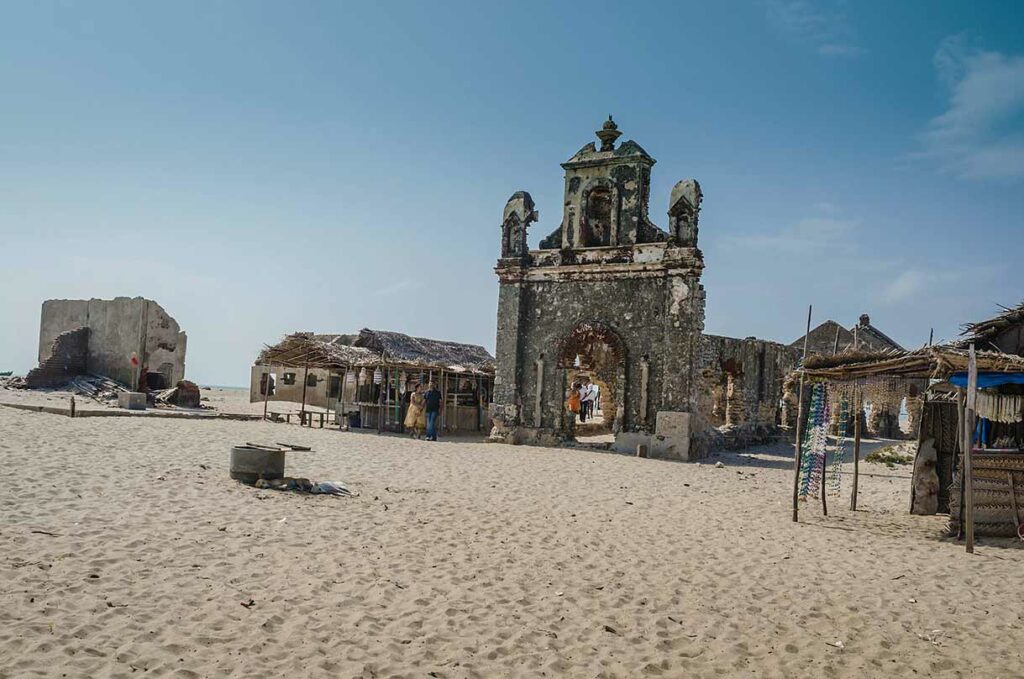
As the original town of Dhanushkodi was washed away in the 1964 cyclone, all that remains are the ruins of a church, the old train station and a few other buildings.
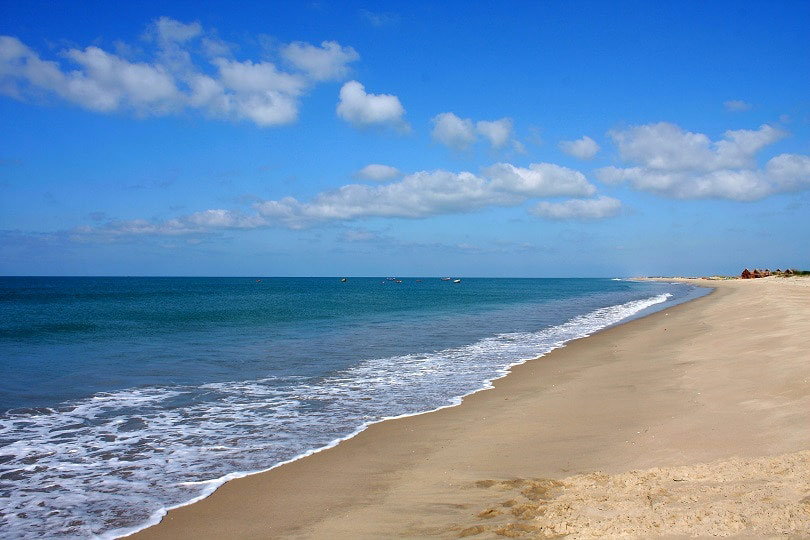
On the way to the tip of the island, several places are worth a look:
The Sri Nambunayaki Amman temple, dedicated to Shakti, built on the sand and surrounded by a huge banyan tree.
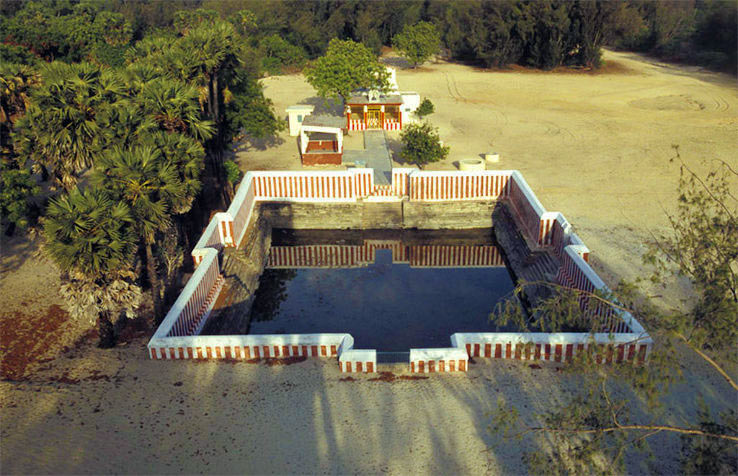
The Jada Theertham, a sacred pool where Lord Rama is said to have washed his tangled hair, after slaying Demon King Ravana and just before making offerings to the god Shiva.
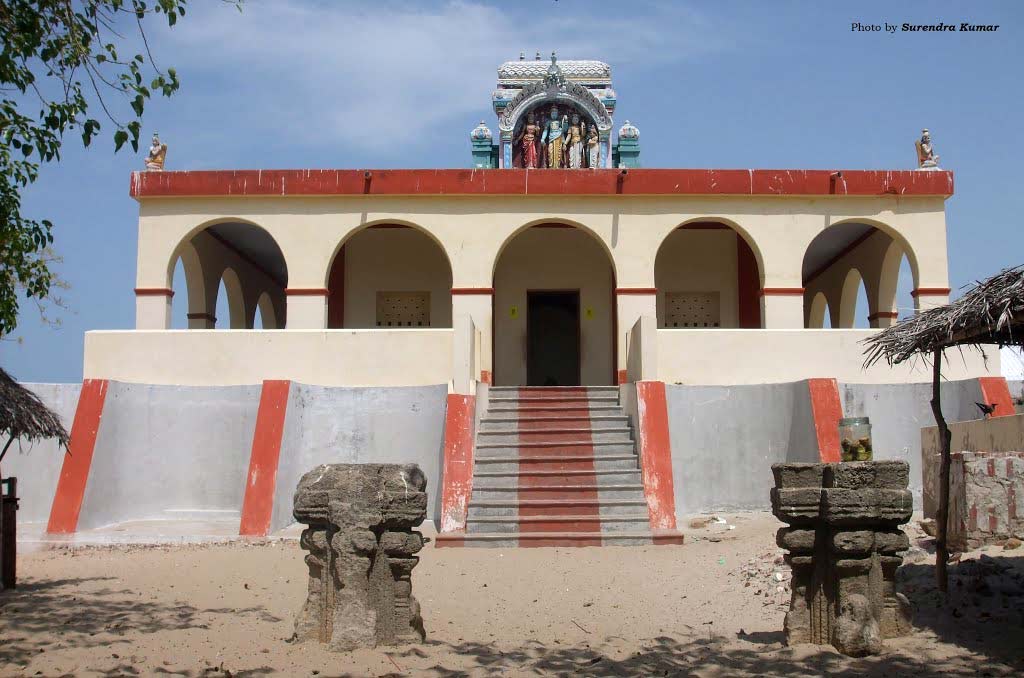
The Vibhishan or Kothandaramaswamy temple, one of the few buildings that remained intact after the passage of the 1964 cyclone. This shrine of about 500 years houses the idols of Rama, Sita and Lakshmana as well as that of Vibhishana, Ravana’s brother, who sided with Rama during the Sri Lankan War. Legend has it that it was here that Rama crowned Vibhishan after defeating Ravana.






